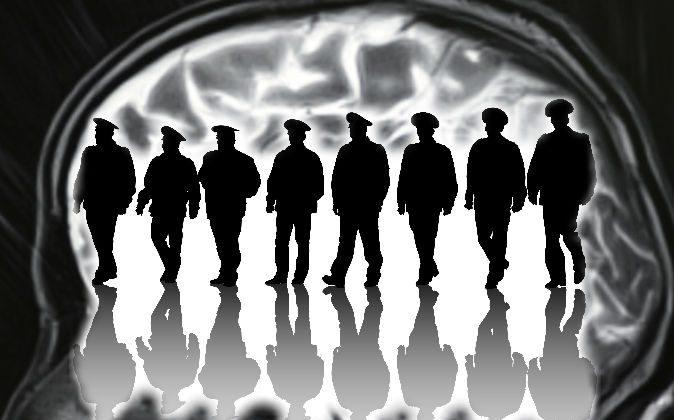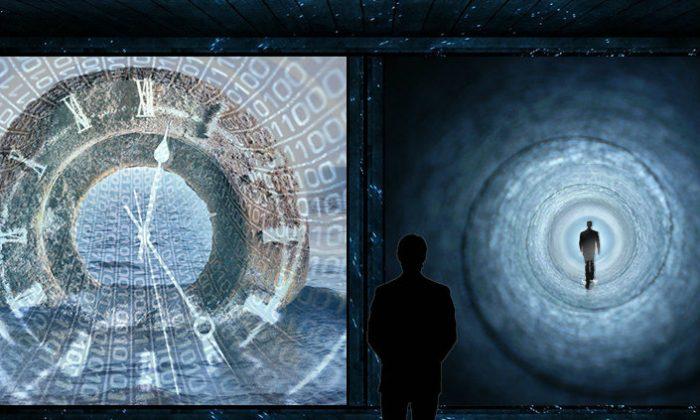Can functional magnetic resonance imaging (fMRI) brain scans and other technology currently being tested on U.S. troops by the military be used to screen police recruits for hidden racist attitudes? The answer is a resounding yes! Departments all over the country should be paying attention because this is the future and it’s ready to use now.
It’s just one bi-product of The Human Brain Project, the goal of which is to map and recreate the brain using super computers. The purpose is to advance the fields of neuroscience as well as technology. That, of course, is only part of the goal of the military and Defense Advanced Research Projects Agency (DARPA)—investors in the technology’s development.
DARPA’s interest in brain mapping is to understand unique individual human cognition and behavior. It isn’t alone in this pursuit. The Royal Society’s “Brainwaves Project” in the U.K. is among others following the same pursuit.
Brain mapping and manipulation are here today and to stay. By creating a map with an ever-increasing resolution, scientists can hone in on very specific regions.
For the military, much of the focus is on predictive behavior and pre-crime. The idea is that they will develop the technology to the point at which they can confidently detect and even predict criminal intent.
For instance, the Department of Homeland Security (DHS) has been developing Future Attribute Screening Technology (FAST) mobile units to be placed in airports or other locations. These are configured to use specialized sensors and cameras which people would simply pass through like a metal detector.
An fMRI machine works by tracking oxygen-rich blood to image neural activity. Increased activity requires increased oxygen. For instance, the brain’s “reward center” becomes active when listening to music. So when a subject listens to music while being observed with fMRI, it is clear that the oxygen-rich blood is directed to the reward center.
The fMRI machine also thus detects activity in areas responsible for deception, happiness, depression, excitement, and more.
The current trend in mapping involves visualizing what the subject is thinking. For example, a University of California–Berkeley news report titled, “Scientists use brain imaging to reveal the movies in our mind,” begins: “Imagine tapping into the mind of a coma patient, or watching one’s own dream on YouTube.”
“This is a major leap toward reconstructing internal imagery,” said Professor Jack Gallant, a UC–Berkeley neuroscientist, in the report.
Now we have to applaud the military for the move toward using fMRI on its recruits. I would advocate that all law enforcement be proactive in following this example.
There are too many half-hearted efforts to reform law enforcement. So when the military says it plans on using this technology to screen troops, to me this is a big deal.
Many studies have tested these technologies as predictive tools for crime and the war on terrorism. And if we’ve learned anything from the National Security Agency (NSA) fiasco, should we count on those working within the justice system to self-regulate?
Right now this technology is quietly exploding across the country. And while I’m opposed to “Big Brother,” I am for screening our troops, police, government, and municipal employees.
Studies suggest we may be able to detect racial bias in the brain using fMRI. For example, a study led by psychologist Jaclyn Ronquillo at the University of Southern California suggested that fMRI could detect a negative response to Afrocentric facial features by monitoring activity in the amygdala part of the brain. Her study was published in 2007 in the journal Social Cognitive and Affective Neuroscience.
Similar studies have been conducted at New York University, Harvard, Princeton, and many other universities, all with similar results. A study at Princeton further showed fMRI could detect judgments that dehumanize homeless people or drug users.

The upside is that this could take much of the guesswork out of the hiring process. It could revolutionize a future in which we will know if someone is secretly a racist before they are hired for a position of authority.
If the goal of people in positions of authority is to screen all of us for what we may be thinking, then they must be held to a higher standard themselves and should be first in line to be scanned. This, of course, wouldn’t apply to every job. But next to DHS and the military, law enforcement is the most obvious and one of the most critical.
Education is a prime candidate right up there with policing that should require pre-employment scans. Furthermore, we can carry this forward and extend testing to all employees where the need to minimize racial bias exists. Firemen, public servants, prosecutors, and judges come to mind.
The mapping doesn’t end there, however, because traits, preferences, mental health issues, disorders, and areas related to deception are being mapped. FMRI lie detection services are already being offered by several private companies.
The real question is, “Why aren’t we already doing it?” My guess is one word—politics.
Look at the current state of our politics and how many citizens are openly expressing racism. Too many of these people would be out of jobs. Right now around the country psychological exams are being scheduled by police departments instead.
In major cities, like Chicago, the focus is on better training, tactics, and technology. Yes, these are all important, but what good is all of that while overlooking the most important factor in the equation? The human brain is the solution. Law enforcement should focus on looking further into the possibilities of these relatively inexpensive scans. It’s hard to fool the fMRI because your subconscious brain reacts too quickly.
But why do these split-second negative responses in the brain exist? The amygdala, which is responsible for fear or racism, operates extremely rapidly, long before our conscious thoughts kick in. So our brains categorize and simplify complex patterns.
Fortunately, in the vast majority of us, the amygdala alone doesn’t control our behavior. We have a large highly-complex frontal cortex, which works when we inhibit impulses, make complicated decisions, and make efforts to behave in socially appropriate ways. Also, in much of the population the left posterior insula is dominant. It involves internalization, self-awareness, and competence.
So, what if in the near future you are required to take an fMRI for a government or municipal job?
As the demographics change, would we want to know if someone wanting to become a teacher or police officer harbors racist attitudes? Would we want to know if someone is a dishonest person, before they are put in a position which requires honesty?
Let the honest people become the book keepers, accountants, and judges. Let the non-racists become teachers, police, firemen, clergy, and medical personnel. It is a brave new world where we can’t put the science back in the box and you’ve been put on notice: “It’s coming fast!”
So can people change? According to almost everyone involved in every study—yes. It’s really up to all of you and the coming generations. Knowing we have the tools available, how much longer will society make excuses for not using them?
Robert Torres (a.k.a. Bobby T) is the author of “Sin Thesis.” He is also a singer, songwriter, artist, and freelance magazine contributor. He invites readers to share their thoughts with him at [email protected].




Friends Read Free